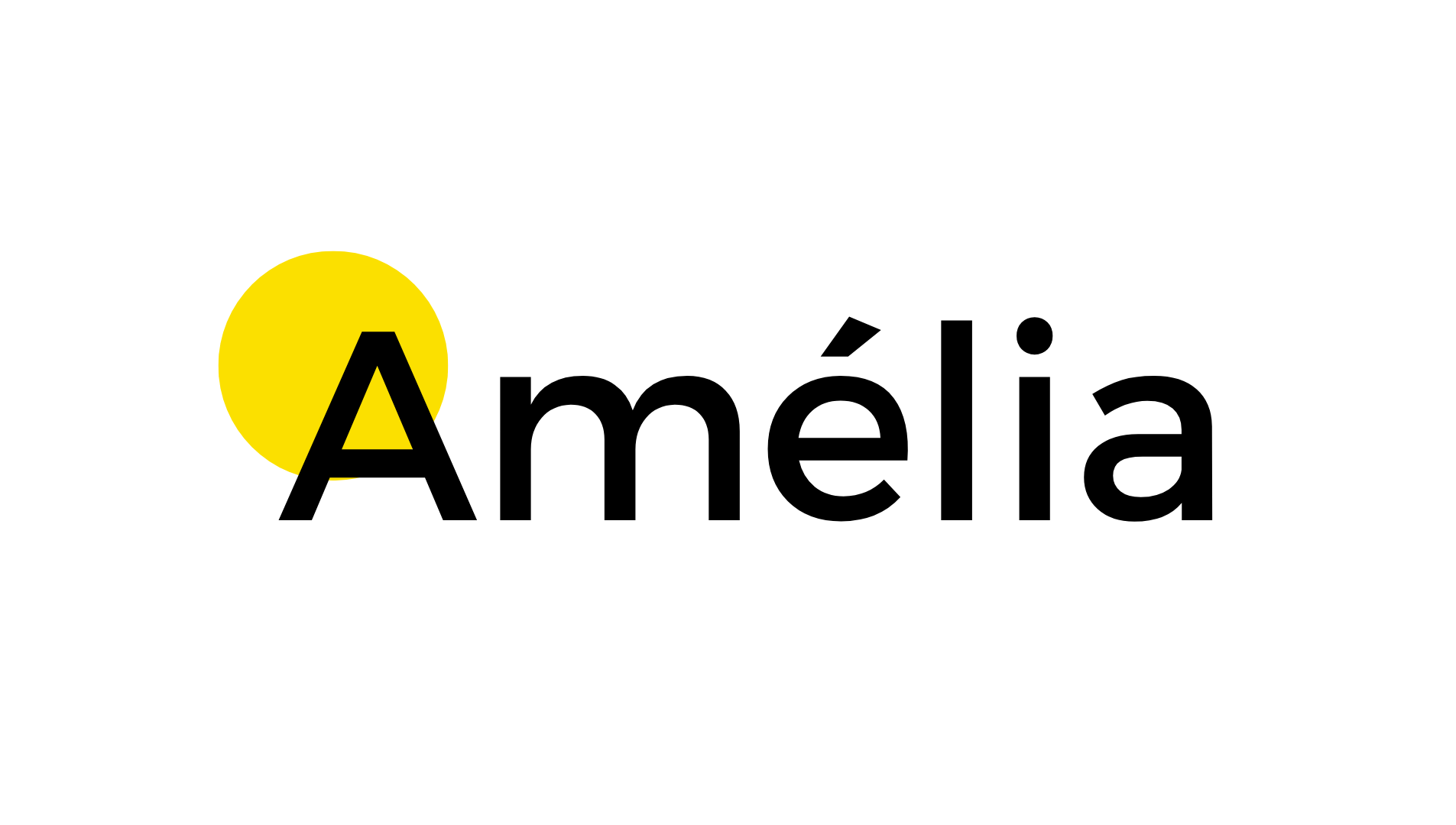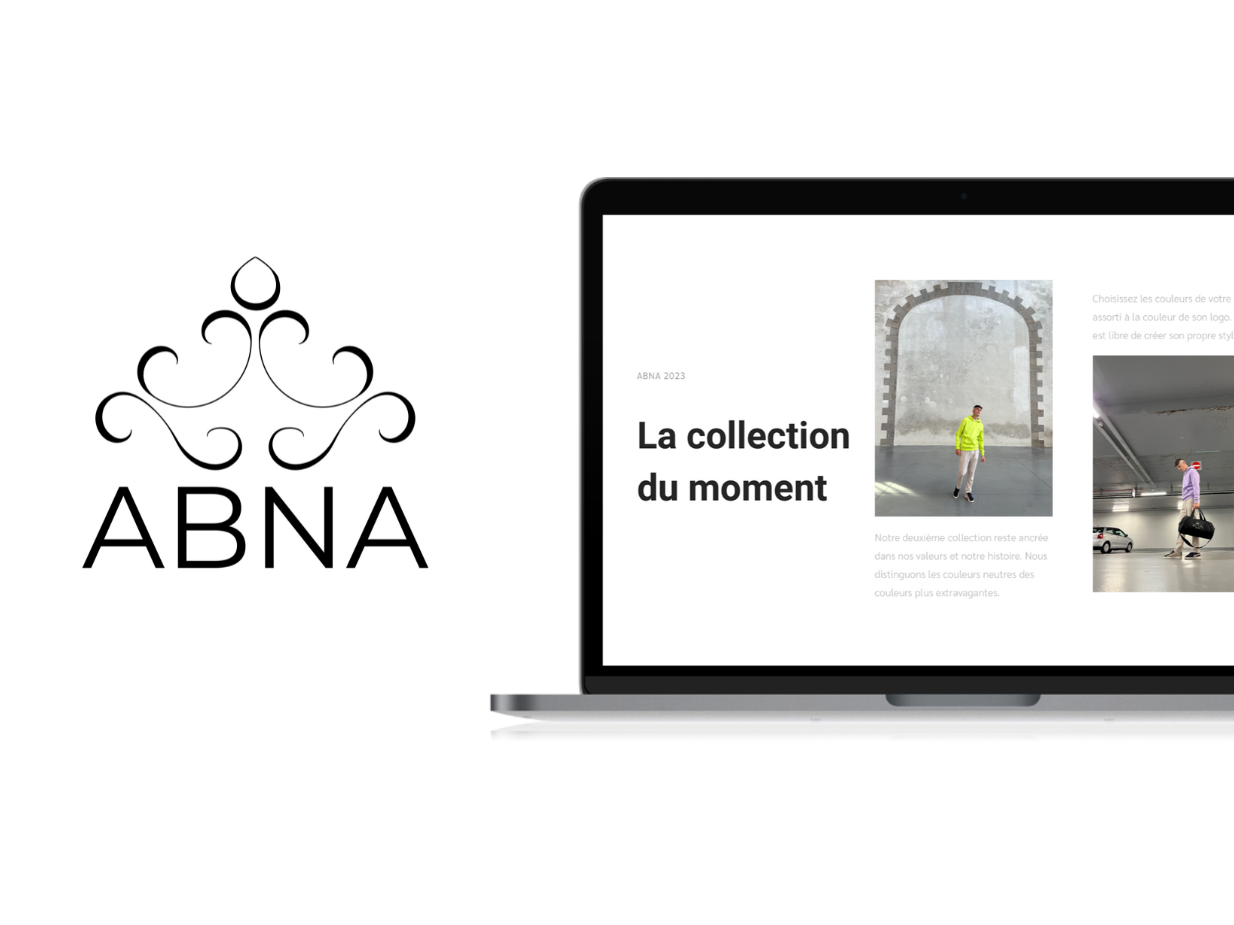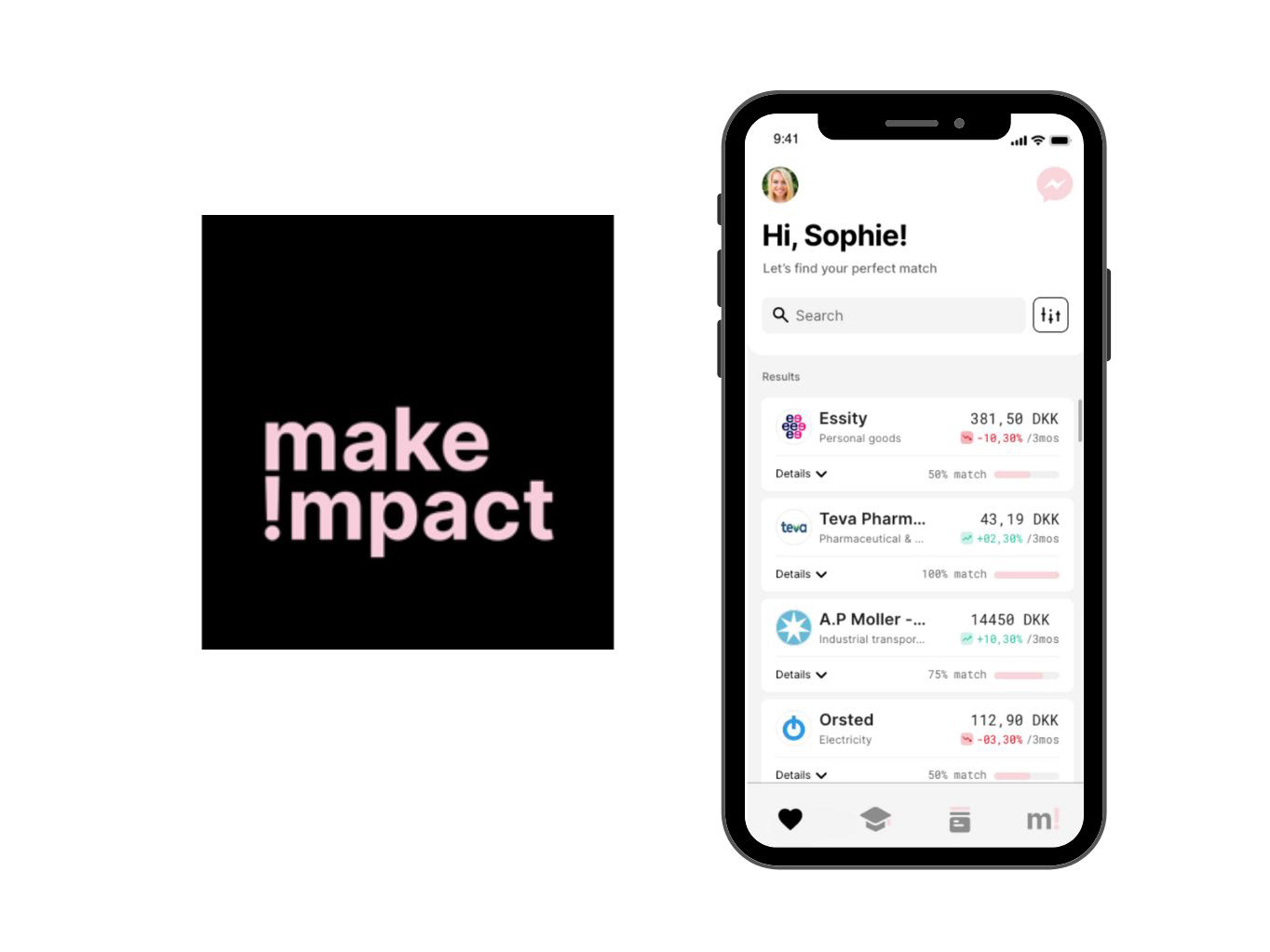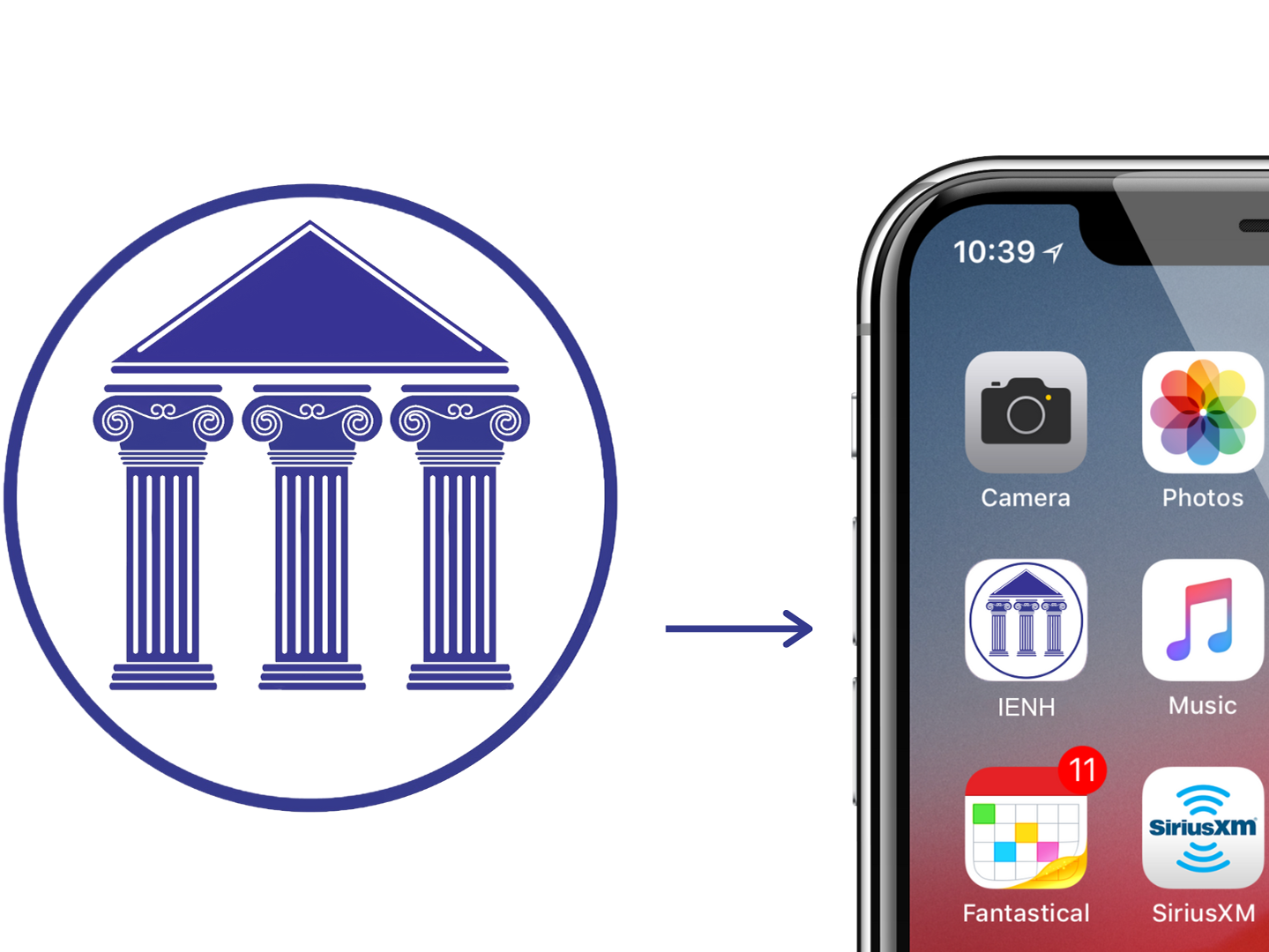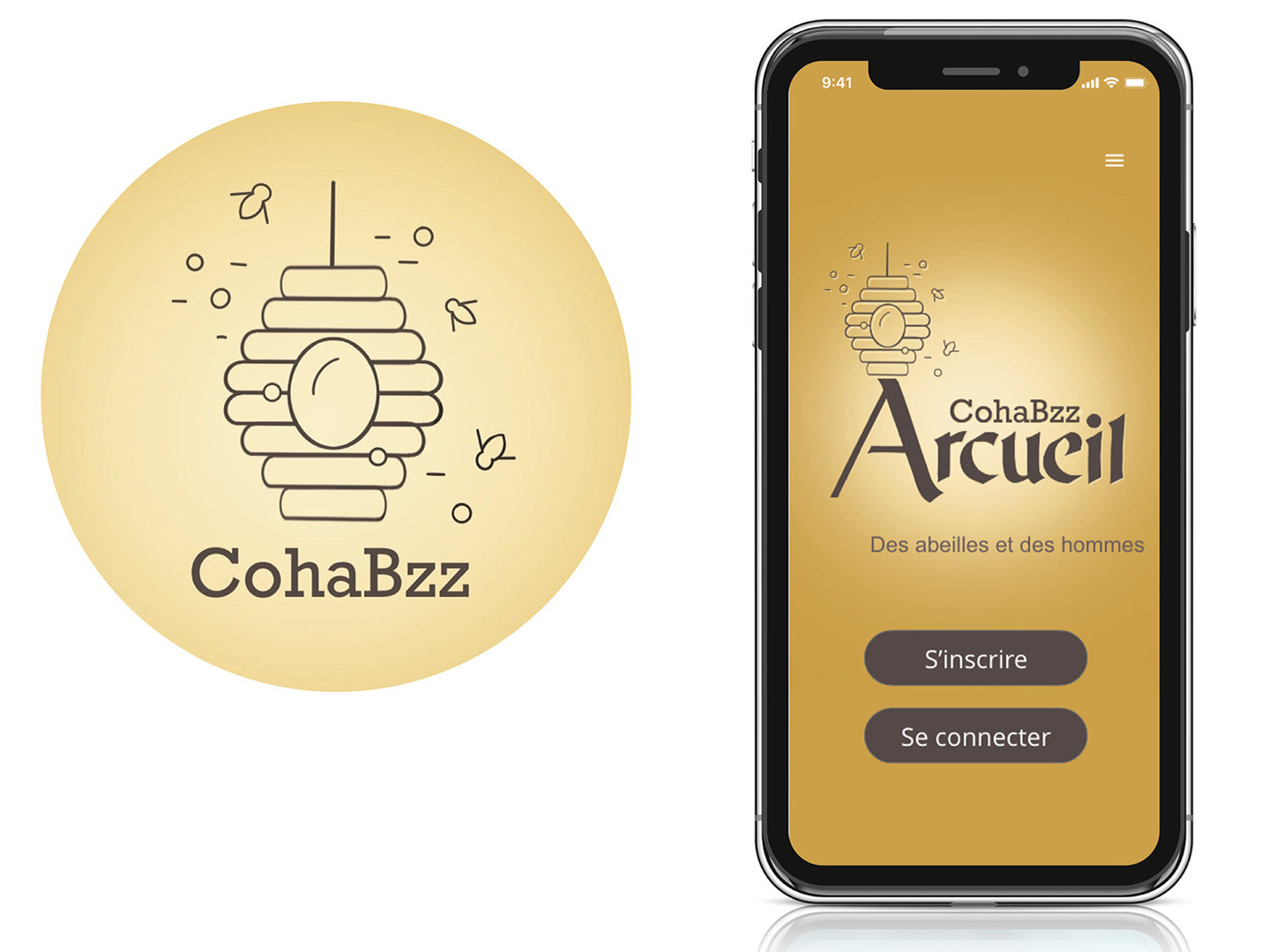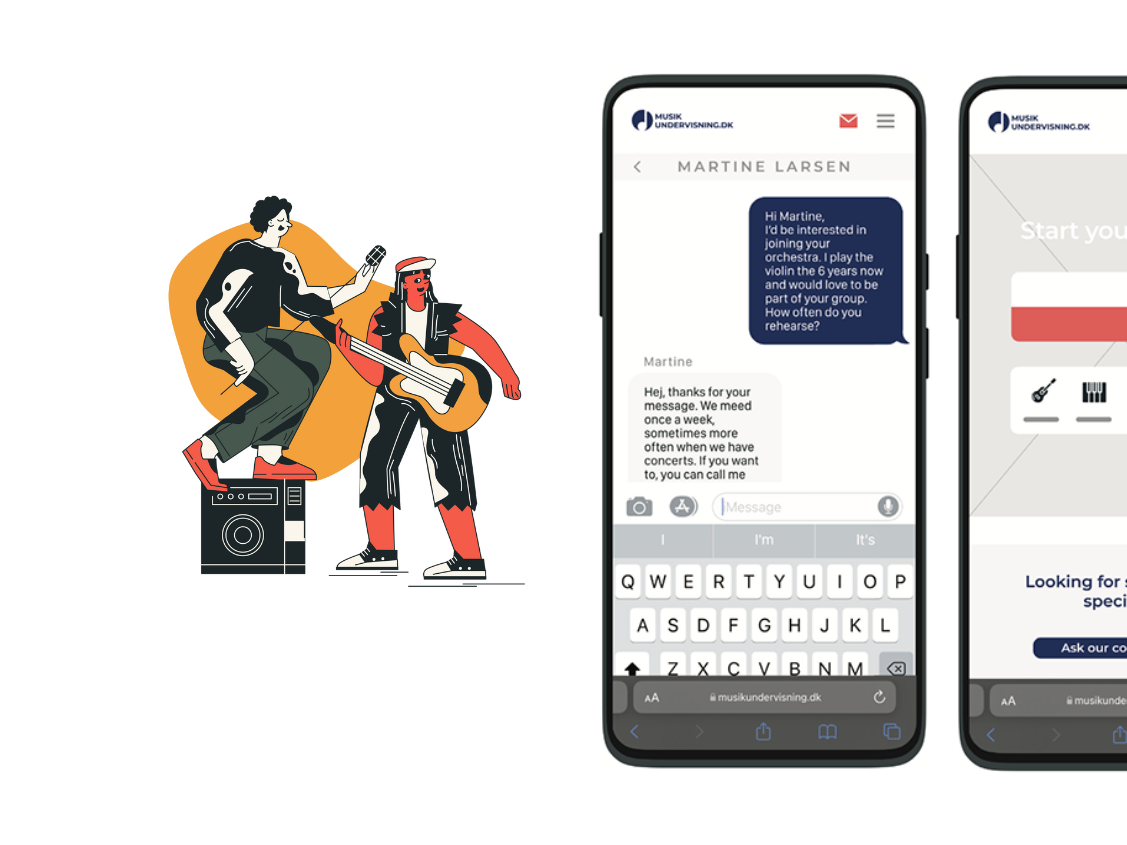The Challenge
A brand new bubble tea company hopes to soon successfully open its two first shops in Denmark and China. Both shops will respectively employ Chinese and Danish workers, and work with local products. The shop's mission is to create and offer a great bubble tea experience to its Danish and Chinese customers. Through its products, the bubble tea shop wishes to create a pleasing localised and culturally-sensitive experience, hoping to build and strengthen the brand, boost sales as well as customer engagement.
Timeline
4 months • 2023
Role
Service Designer
Final Design Presentations
The Research Question
How to design a service experience for a bubble tea shop that effectively caters to the preferences and cultural nuances of customers in both Copenhagen and Beijing?
The Framework
The Double Diamond is a framework that serves to structure the design process in four different interconnected phases: Discover, Define, Develop and Deliver phases. It helps to get a clear overview of the process, while allowing iterations. For the purpose of this project, a culturally sensitive Double Diamond has been developed.
1. Discover
This phase uses both qualitative and quantitative research. Specifically, desk research, benchmark analysis, a survey, a user diary mood board exercise and interviews were conducted.
Defining Bubble Tea
Bubble tea, 珍珠奶茶 (zhēnzhu naichá) in Chinese also known as boba, can be described as a popular tea-based drink, originated in Taiwan in the 1980s. It is most often made out of tea, milk and the famous tapioca pearls. The beverage became famous in the 1990s in Asia, while the American and European markets had to wait until the 2000s. Its overall market was 2.06 billion euros in 2019 and is expected to reach 3.18 billion euros before 2028. Bubble tea has become an essential part of the lifestyle of young people in urban areas of China. The rise of bubble tea culture has been attributed to its affordable price, making it an attractive option for low-wage workers and students.
Bubble Tea in Denmark & China
Bubble tea shops are much more present in China than in Denmark. Beijing accounts for thousands of different bubble tea shops, whereas Copenhagen counts no more than twenty of them. Bubble tea is a new product in the Danish market, as the first bubble tea shop only opened in Denmark in 2012. The market in China appears to be practically saturated and flooded with competitors, with approximately half a million bubble tea shops currently operating in the country.
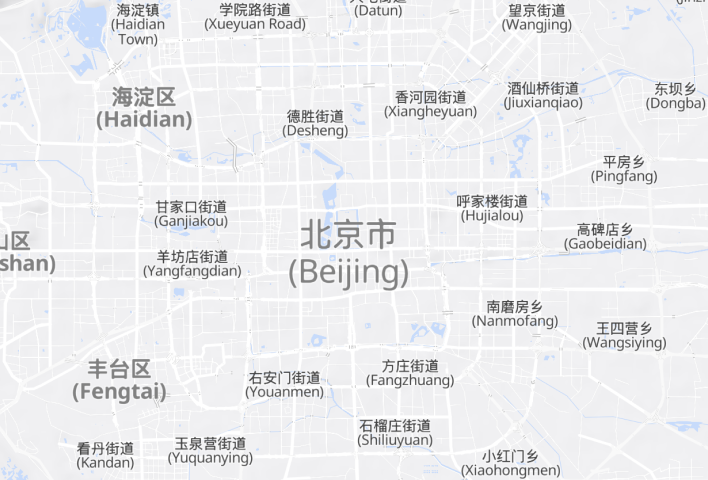
Beijing City Map View
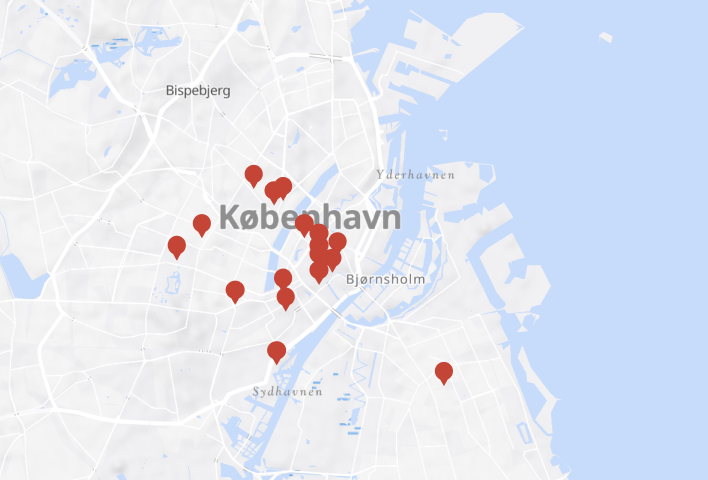
Copenhagen City Map View
Benchmark Analysis
A competitive analysis was carried out to recognise the key players in the bubble tea market in Denmark and China. Analysing the bubble tea context and reality of Copenhagen and Beijing helped to consider how aesthetic, semantic and symbolic aspects are represented to understand the difference in service experience.
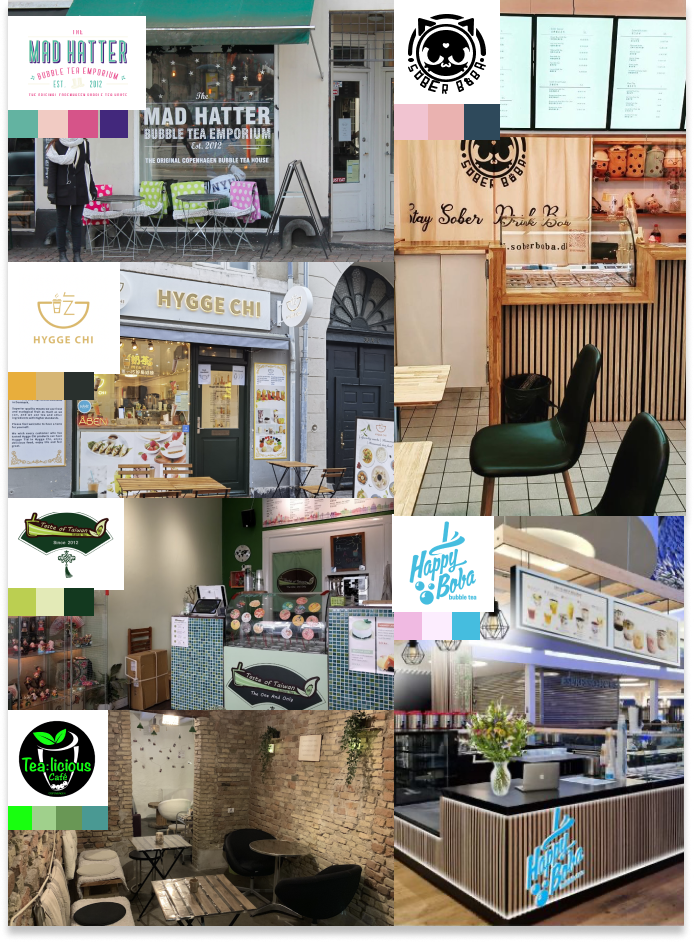
Copenhagen Shops
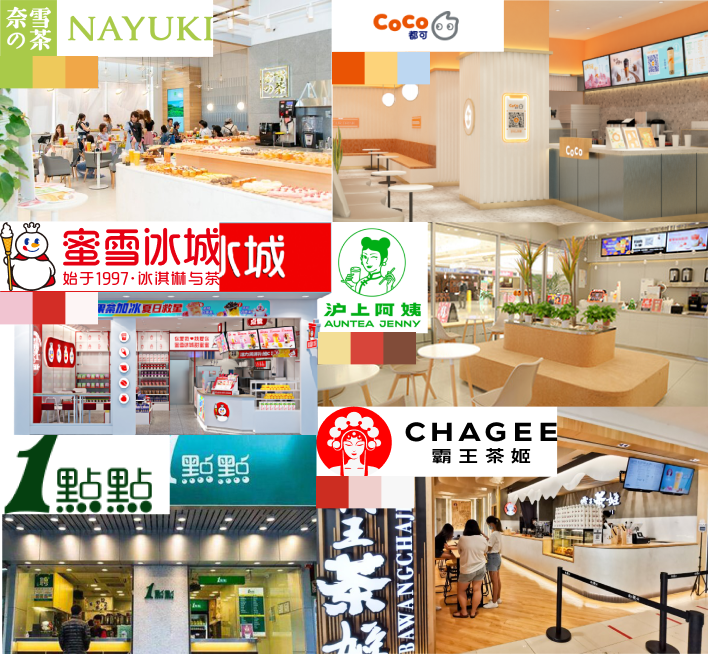
Beijing Shops
Quantitative Survey
A survey helped to gather quantitative data to investigate usage, preferences and demographics associated with bubble tea consumption. It targeted Danish people living in Copenhagen and Chinese people living in Beijing, from all genders and all ages.

Verbatim from Chinese participants

Verbatim from Danish participants
User Diary Moodboards & Interviews
A user diary mood board is an exercise for gathering qualitative information by giving users a way of recording their personal experiences away from researchers. It allows users to tell about their own lives in their own time, and helps designers gather information about real users, gain understanding and empathy about other people’s experiences.
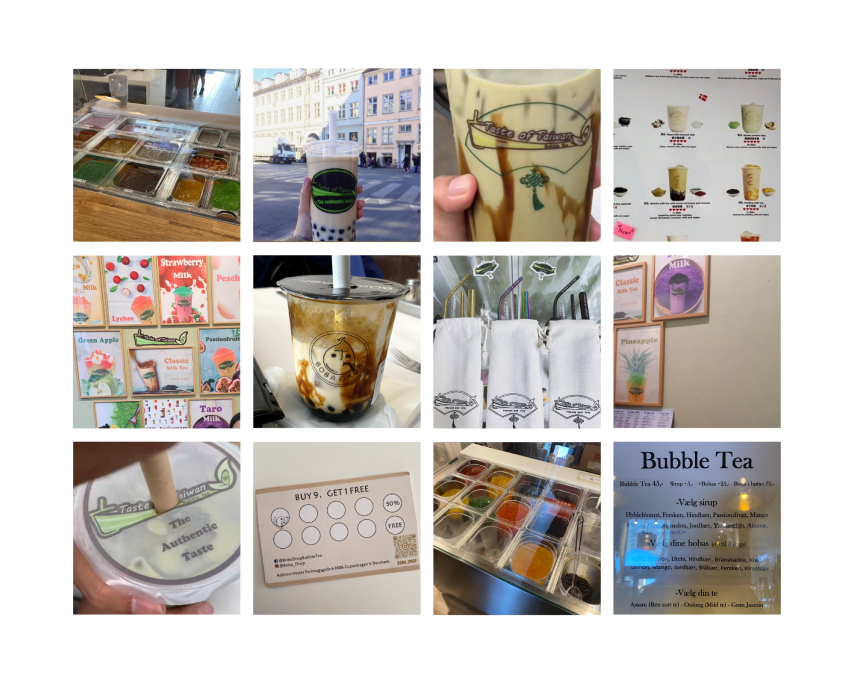
Moodboard created by Danish participants
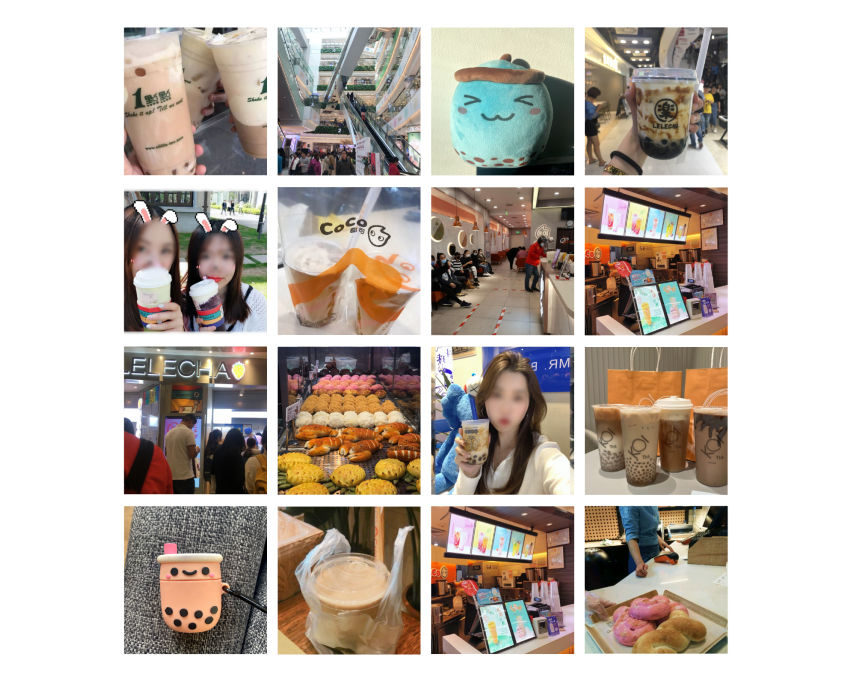
Moodboard created by Chinese participants
"Bubble tea does not look like anything healthy.
I'm a bit lost when ordering.
Intimate hygge places are my favourites.
Verbatims from Danish participants
"After a long day of work, all I need is my boba!
My bubble tea needs to be cute and colourful.
The longer the queue the better!
Verbatims from Chinese participants
2. Define
This phase channels the findings towards actionable tasks and insights. This phase presents an owner interview, the synthesis of findings, the gaps model, an ecosystem map and the creation of user group personas.
Danish Owner Interview
It was essential to not only understand the needs and expectations of customers but also those of the shop owners and managers themselves. I engaged in one conversation with a shop owner to get a better understanding of how well their businesses currently meet customer needs, as well as identify any challenges they might face.
"Many Danes are not familiar with the drink.
It is important to offer a cosy and inviting atmosphere.
Danish customers always get safe choices.
Synthesis of Findings
To synthesise the data previously collected, visual representations were created, where icons serve as a quick reference to understand and remember the key takeaways.
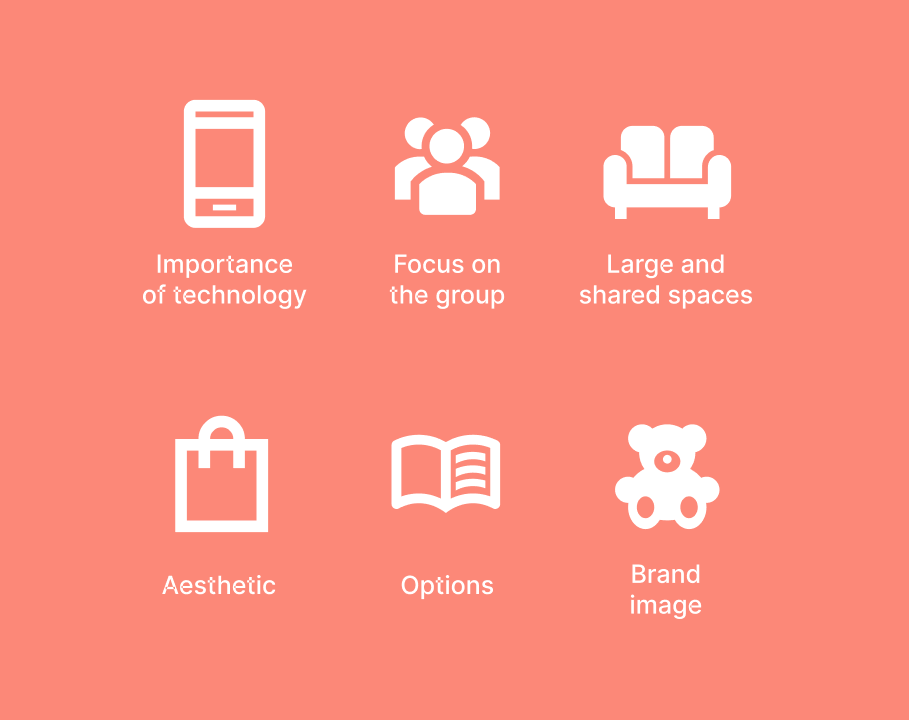
Beijing Key Findings
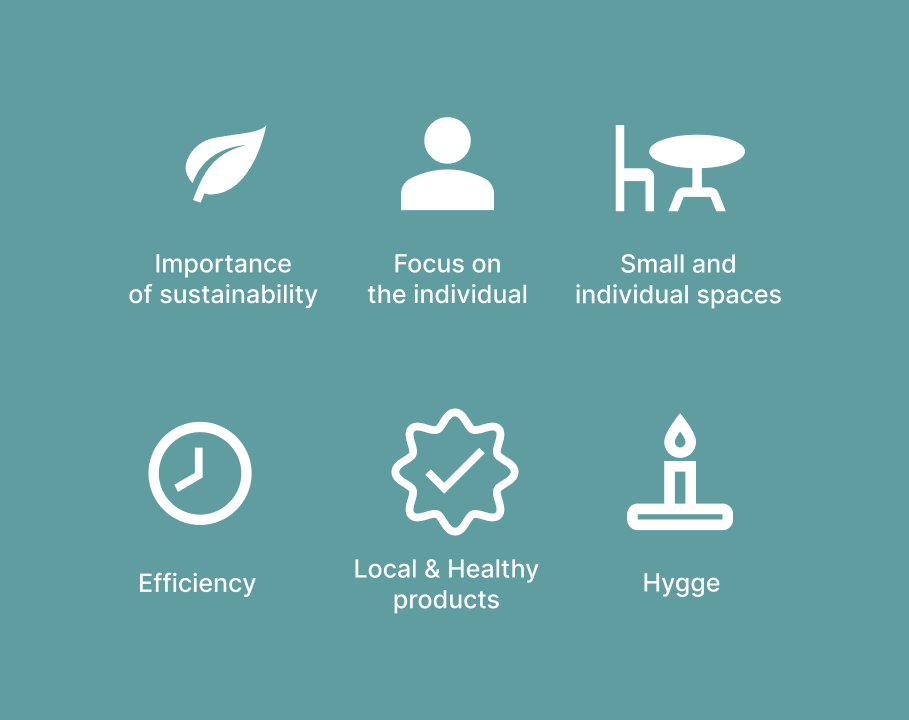
Copenhagen Key Findings
Ecosystem Map
This map illustrates the interactions between different actors and the type of value exchanged between them, providing valuable insight into the functioning of the system behind the service.
User Group Personas
For this case study, six personas were created; three for each cultural user group.
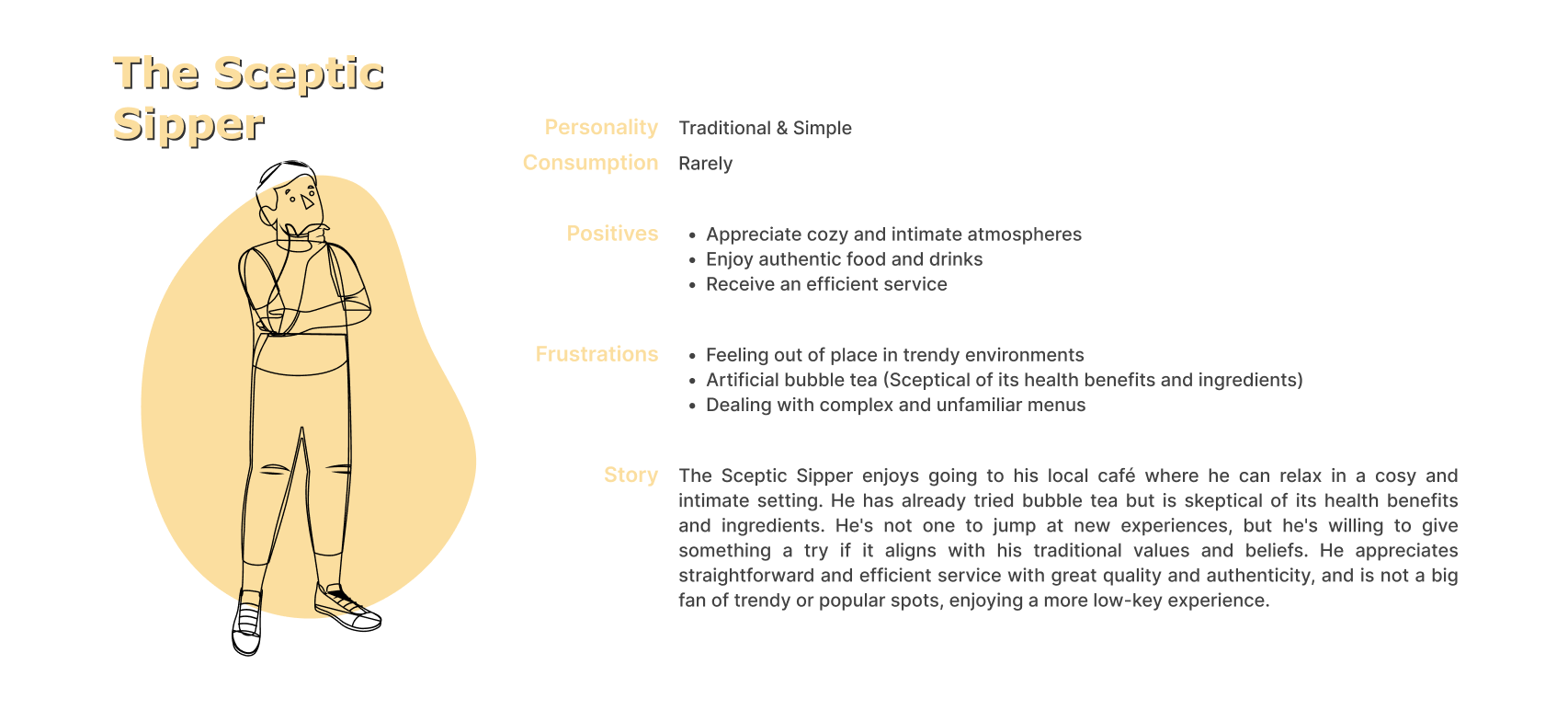

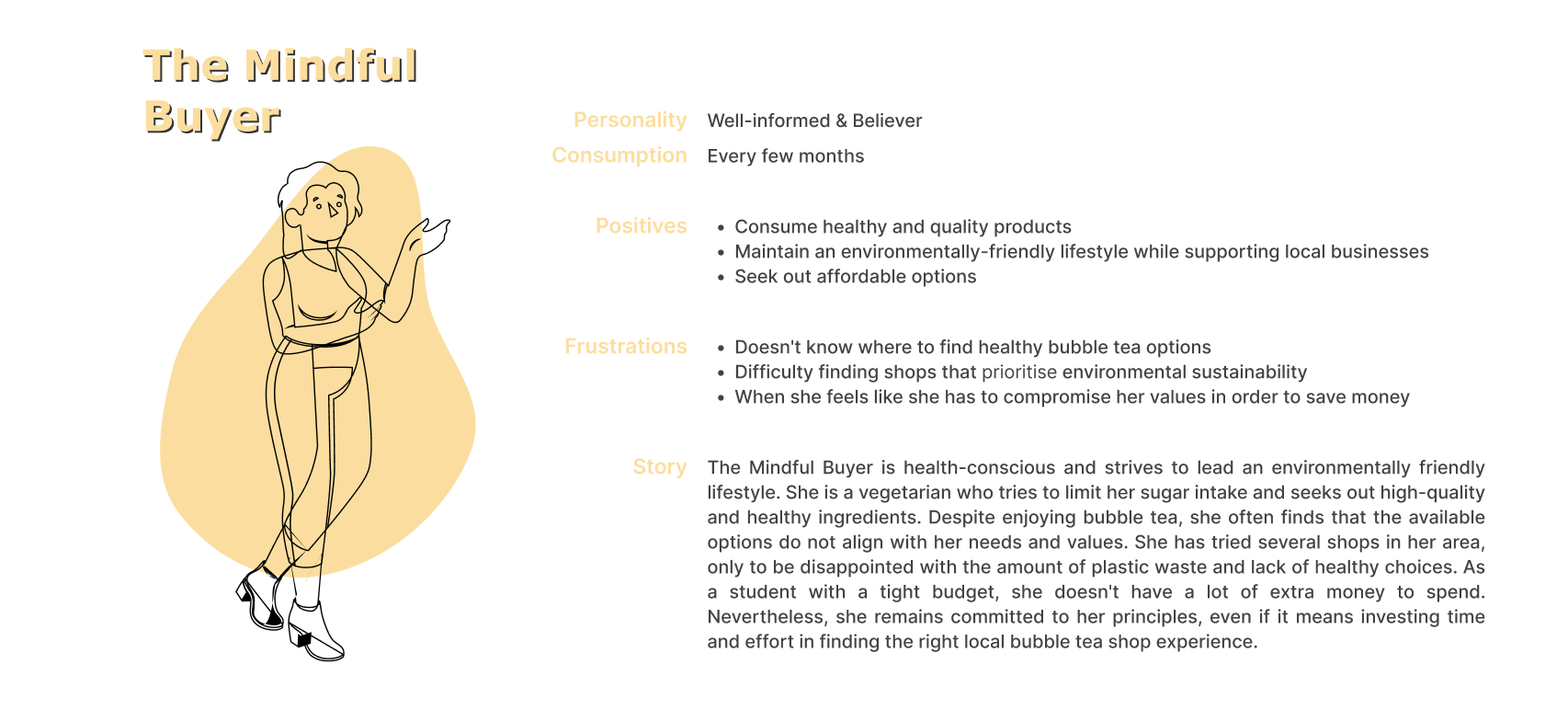

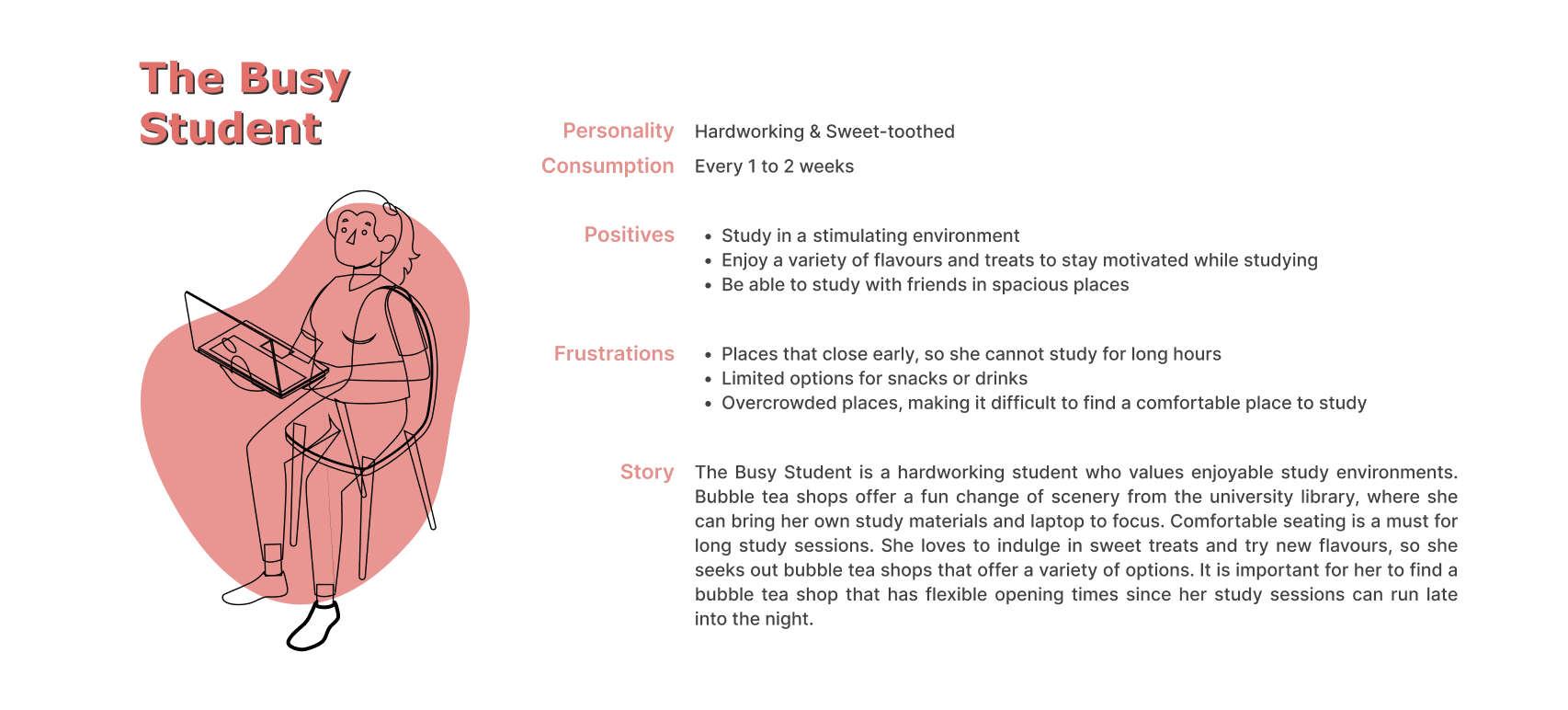
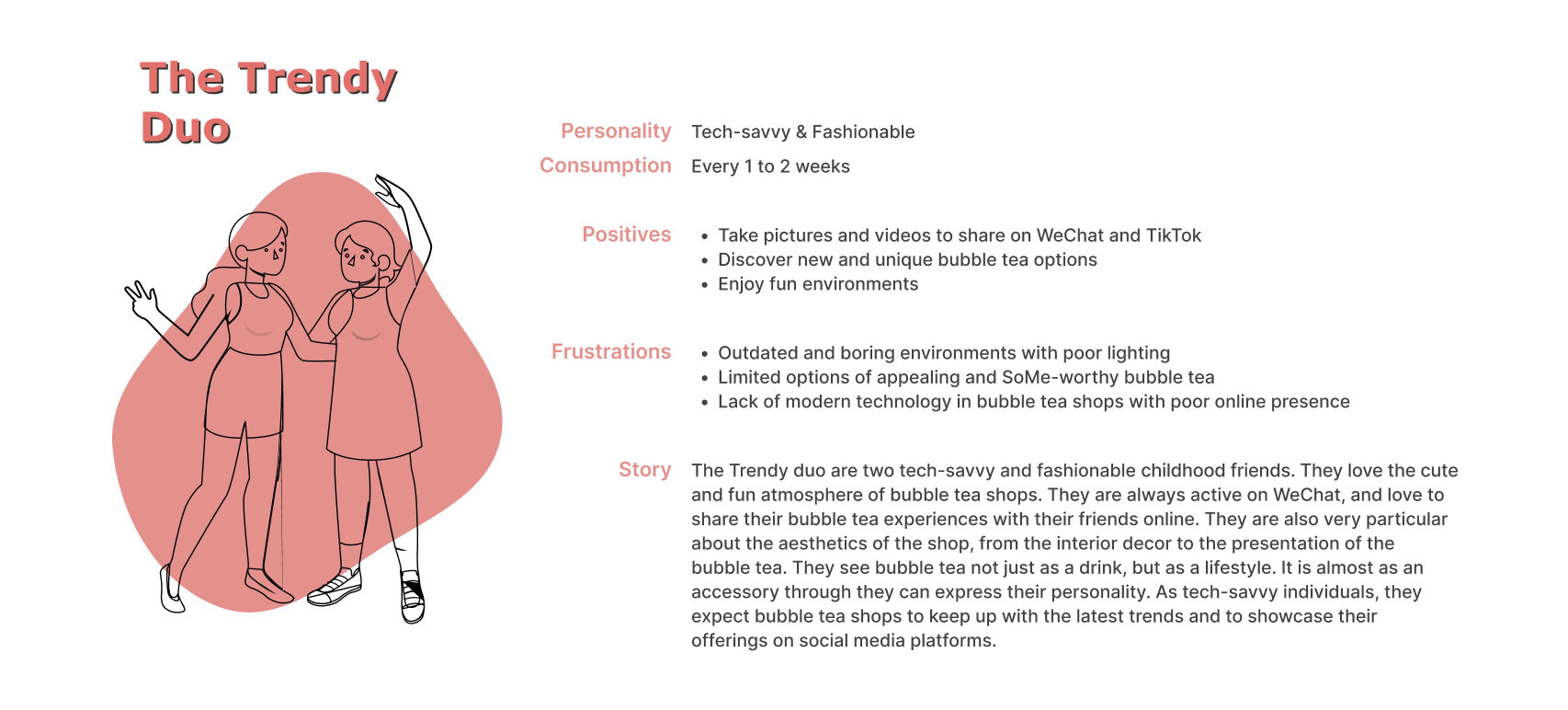
3. Develop
This phase serves for ideating, developing and framing concept ideas. This phase consists of a "How might we?" exercise, the creation of user journeys, services blueprints, use cases, concept framing presentation and a testing workshop.
User Journeys
Journeys were created for each persona to gain a deeper understanding of their behaviours and interactions with the service. While linear journey maps can oversimplify user experiences, efforts were made to address potential limitations by incorporating verbatims and pain points to every stage of the journey map to represent more nuanced user experiences. This approach emphasises the importance of cultural sensitivity and demonstrates how adapting design methods to better reflect the diversity of user groups.

User Journey - Copenhagen User
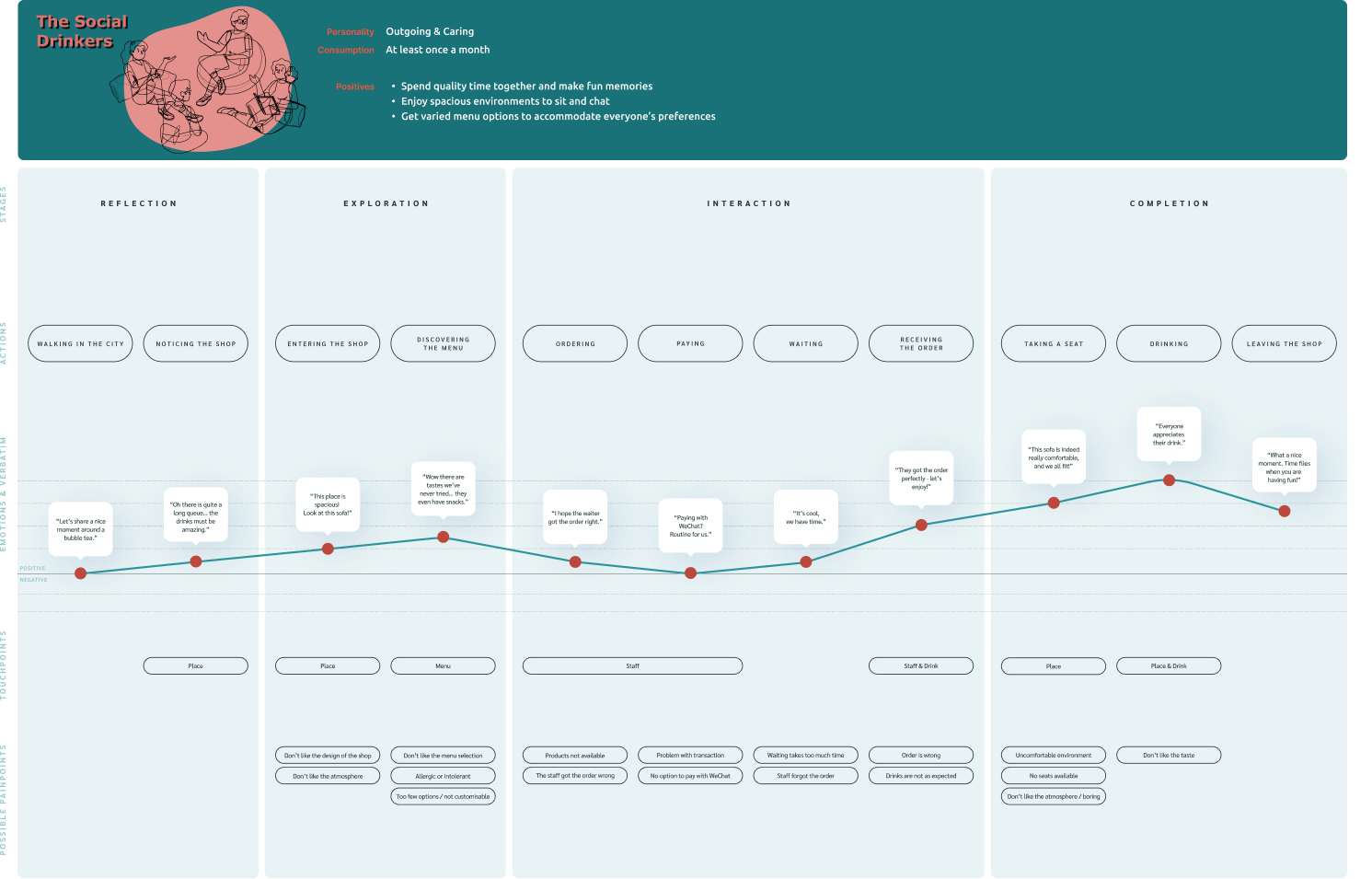
User Journey - Beijing Users
Service Blueprints
This blueprint illustrates the step-by-step process involved when ordering a bubble tea, taking into account the interactions between customers, employees, and physical evidences. By providing a holistic view of the service delivery process, this detailed mapping allows organisations to identify and address potential issues that may arise during service delivery, ensuring that the customer experience is seamless and effortless.
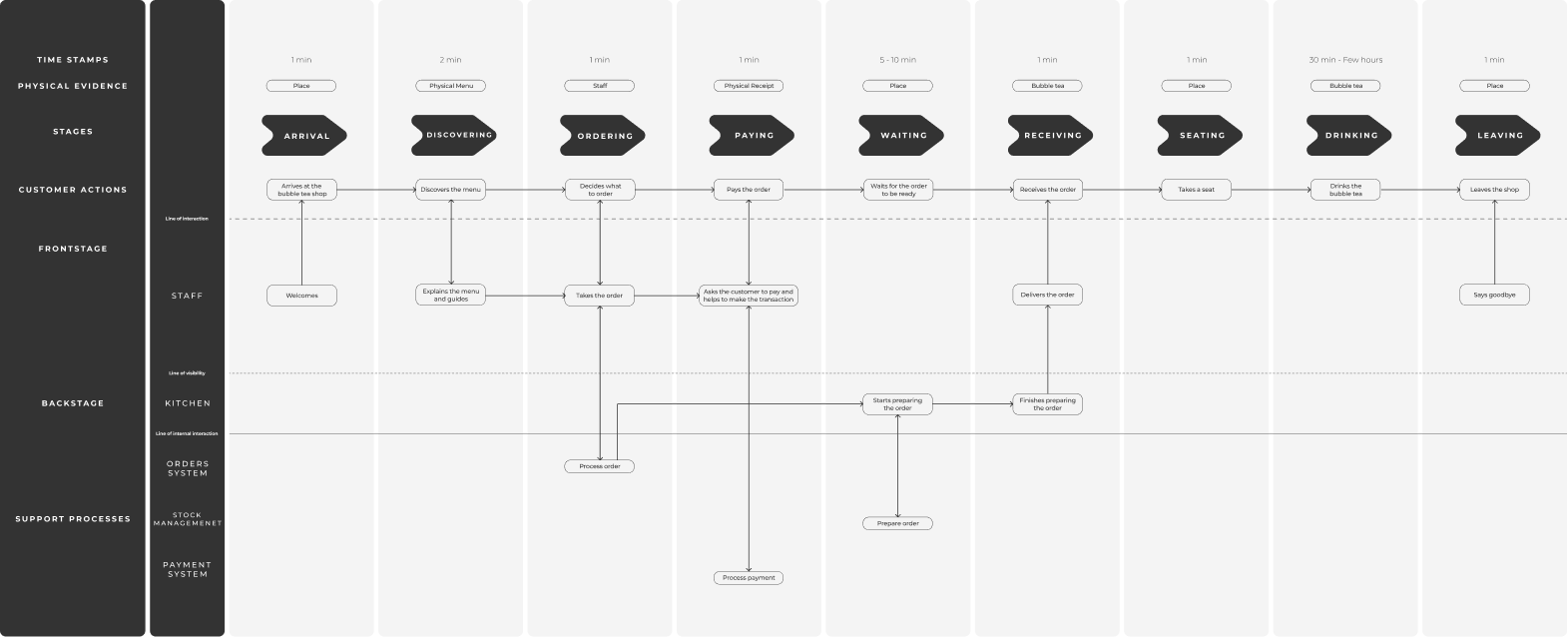
Service Blueprint - Copenhagen Bubble Tea Shop
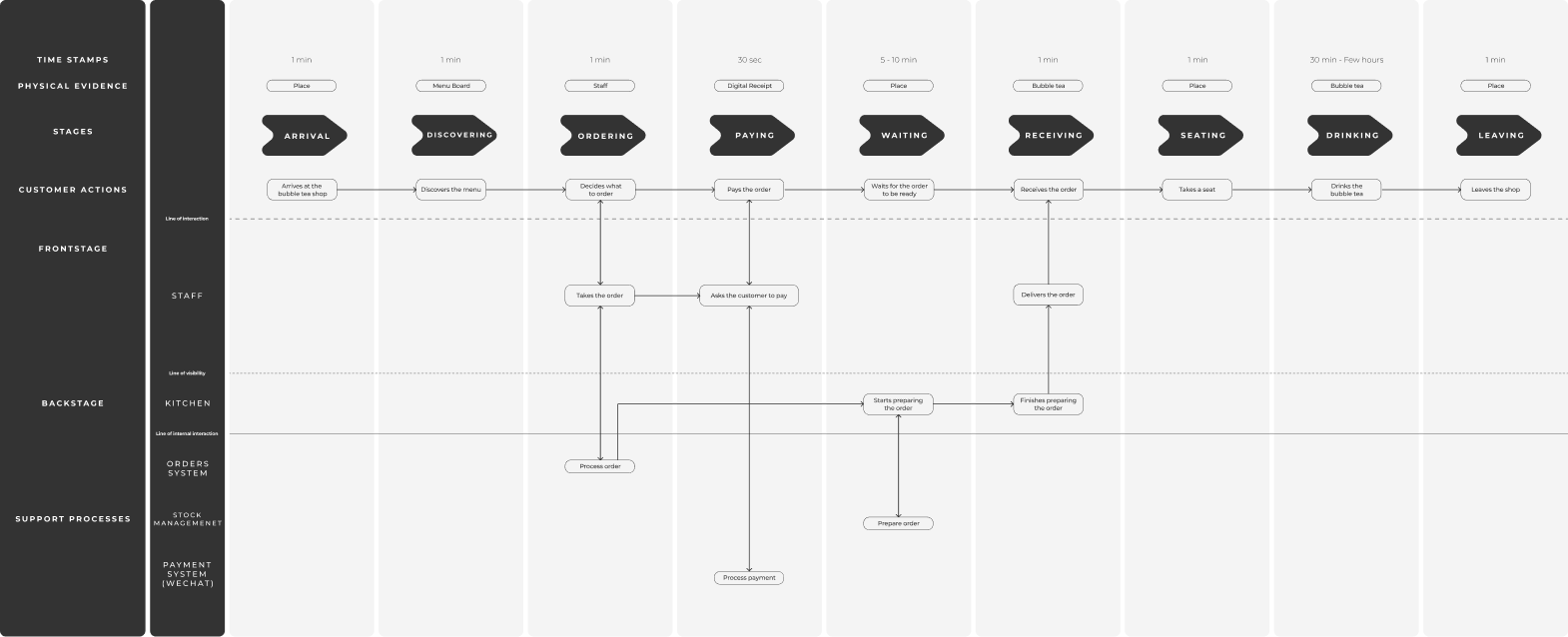
Service Blueprint - Beijing Bubble Tea Shop
Use Cases
Theses scenarios are used to outline a specific interaction between a user and a service. It provides a detailed description of the functionality of the service, including the main actors involved, the flow of events, and any possible alternative paths. A use case also includes pre- and post-conditions that help to define the context and the expected outcome of the interaction.

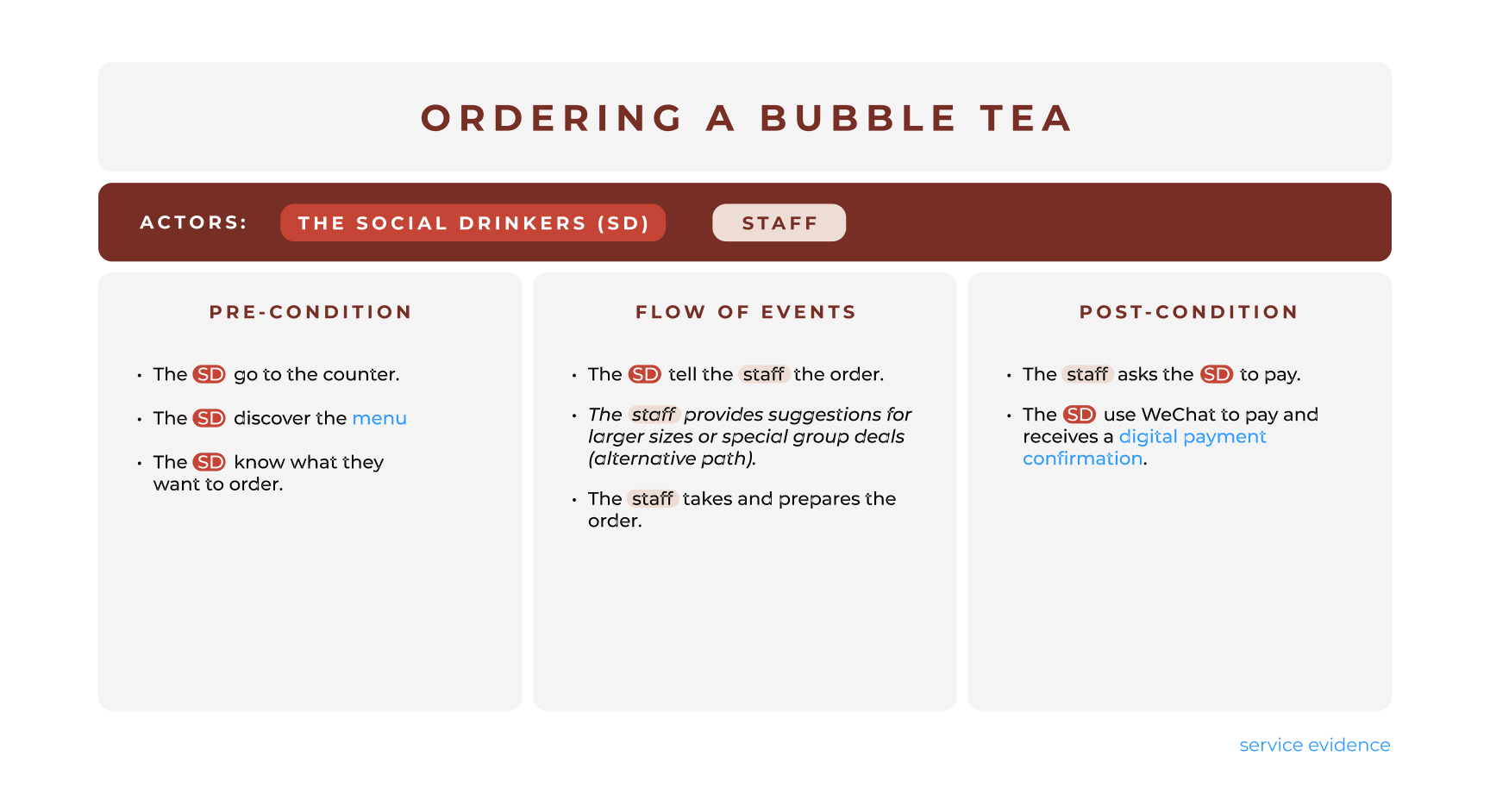
User Testing
Gathering feedback from users was crucial to ensuring the success of a service concept. It was decided to conduct a testing workshop with potential Danish and Chinese users, for them to provide their thoughts and opinions on the service concept, and gather valuable feedback and insights.
Miro Board used during user testing sessions
4. Deliver
This final stage represents the delivery phase of the concept, deliverables and suggestions for implementation. The research and ideation phase made it possible to narrow down and create different prototypes, defining colours, decoration and furniture, menu selection, lighting, tone of voice and more.
The Solution • 都 du Bubble Tea
The name 'du' (都 in Mandarin) is chosen with the intention of catering to both Danish and Chinese customers. In Danish, “Du” means “you” which represents the Danish individualistic culture, this idea of intimacy and proximity. On the other hand, in Chinese, “Du” means “all, the whole, the capital” and represents the idea of collectivism and shared practices. Hence, the name 'Du' showcases the brand's ability to adapt to both cultures, while still maintaining the same core identity. A name that is meaningful and relatable to both cultures can help create a sense of connection and authenticity.
Du Bubble Tea • Copenhagen
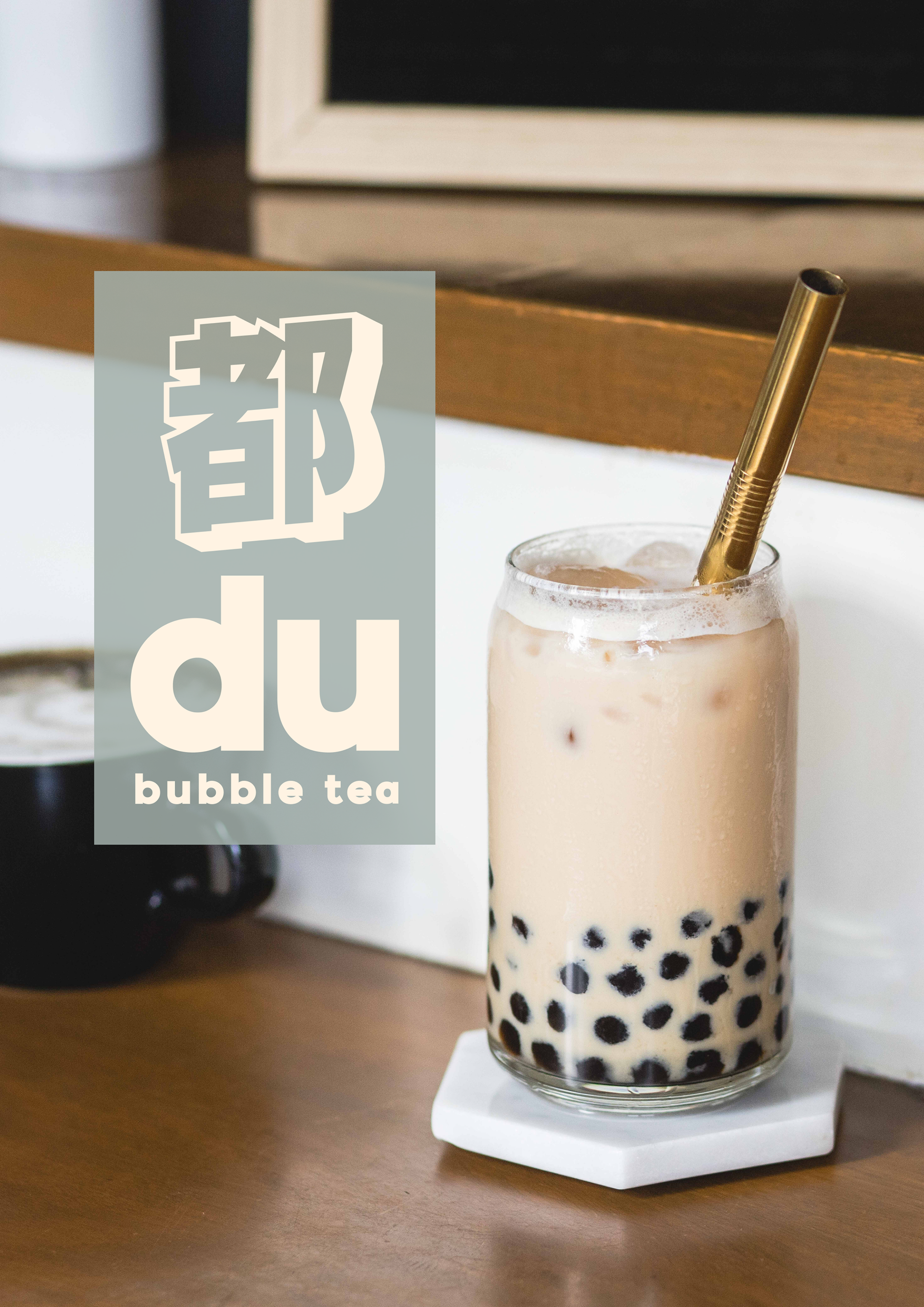
Poster Proposal
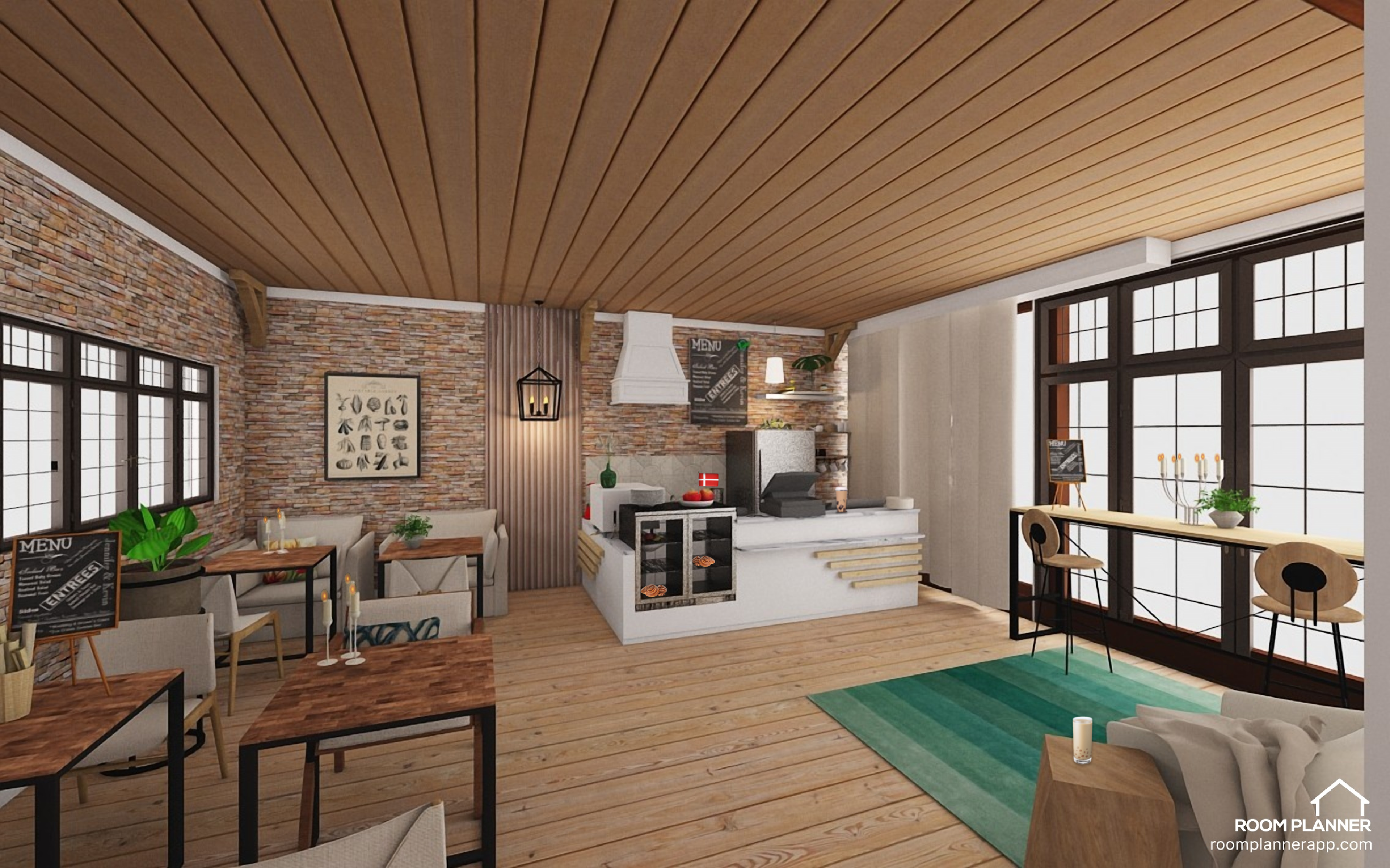
3D Prototype
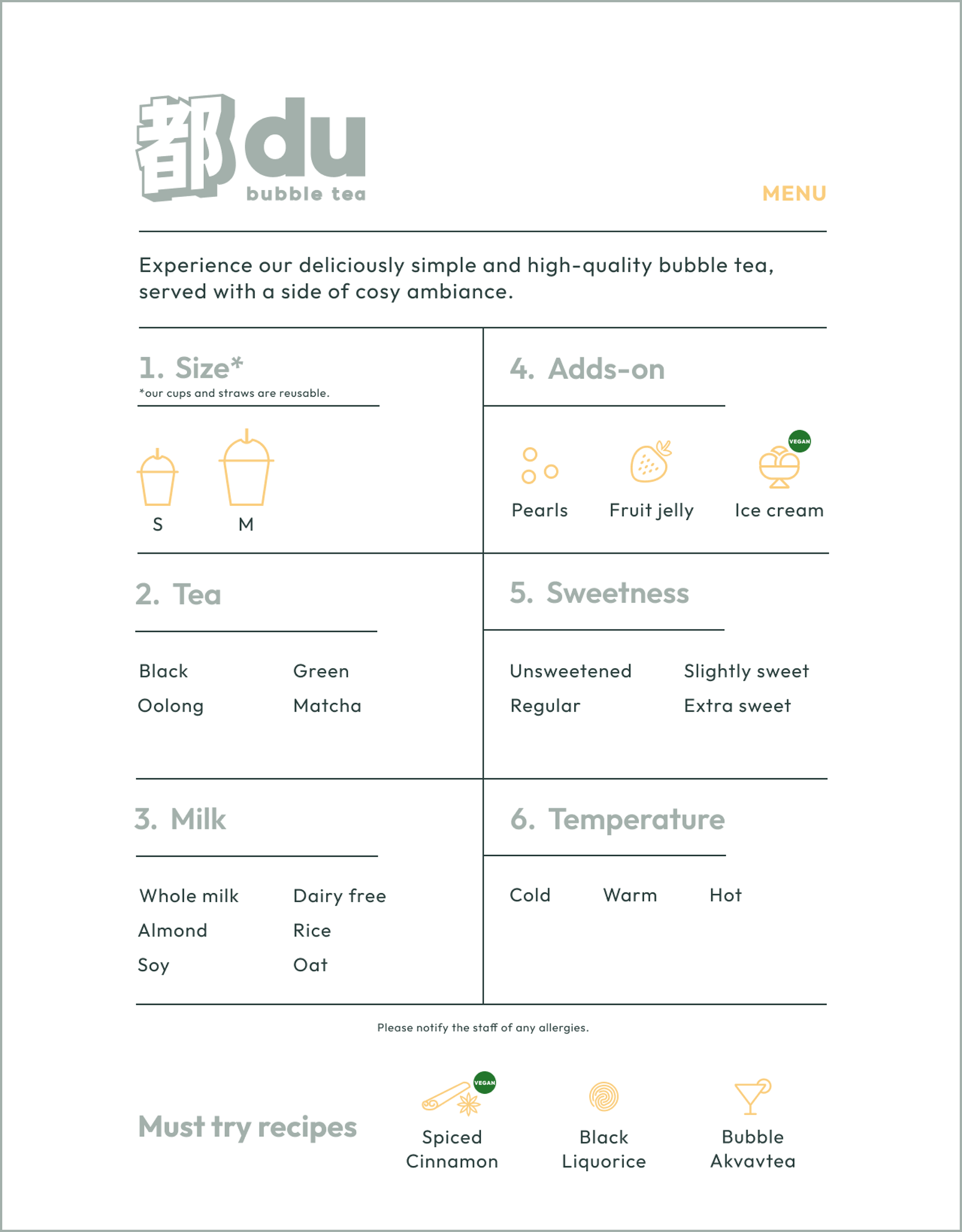
Menu
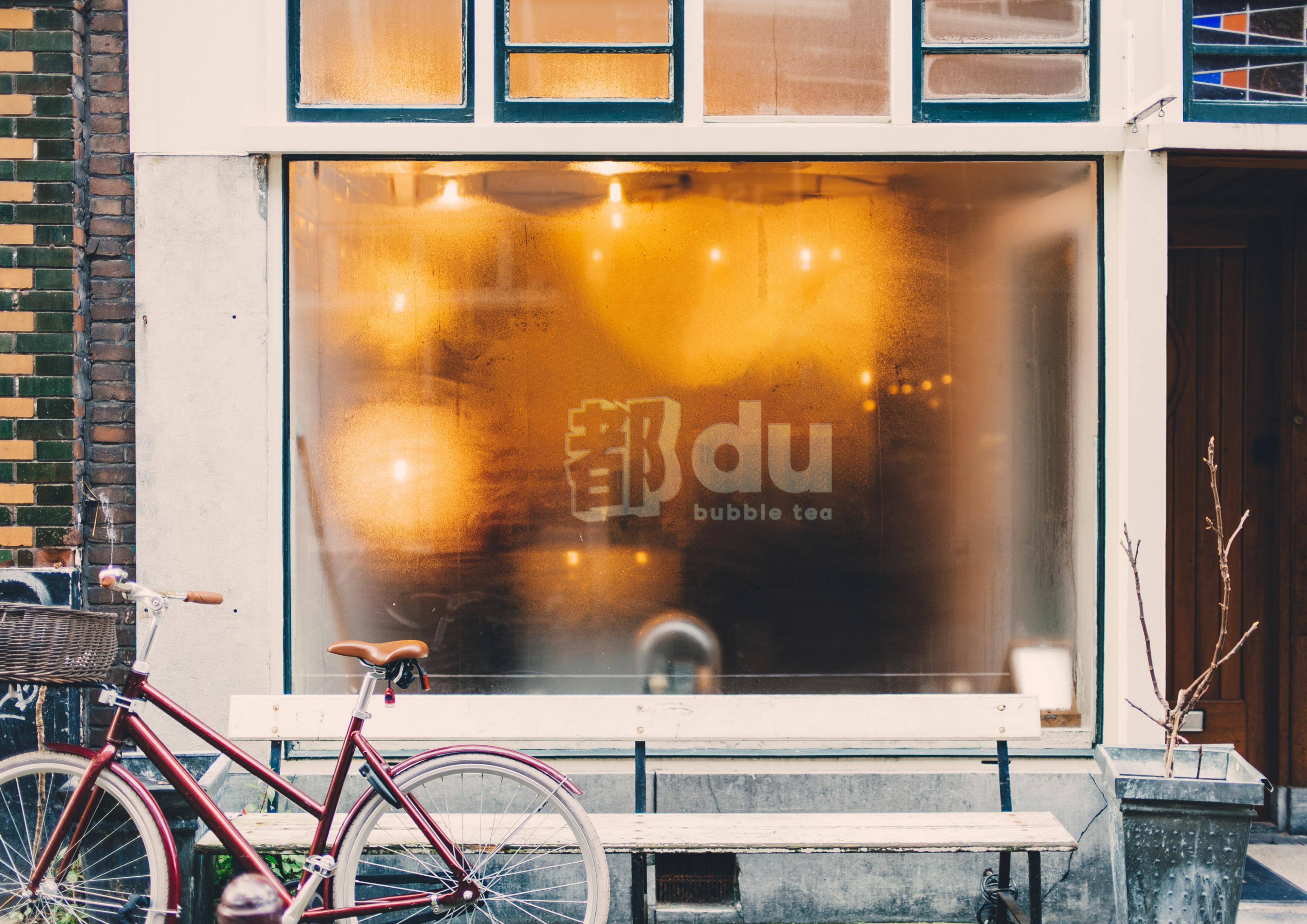
Mock-up
Du Bubble Tea • Beijing
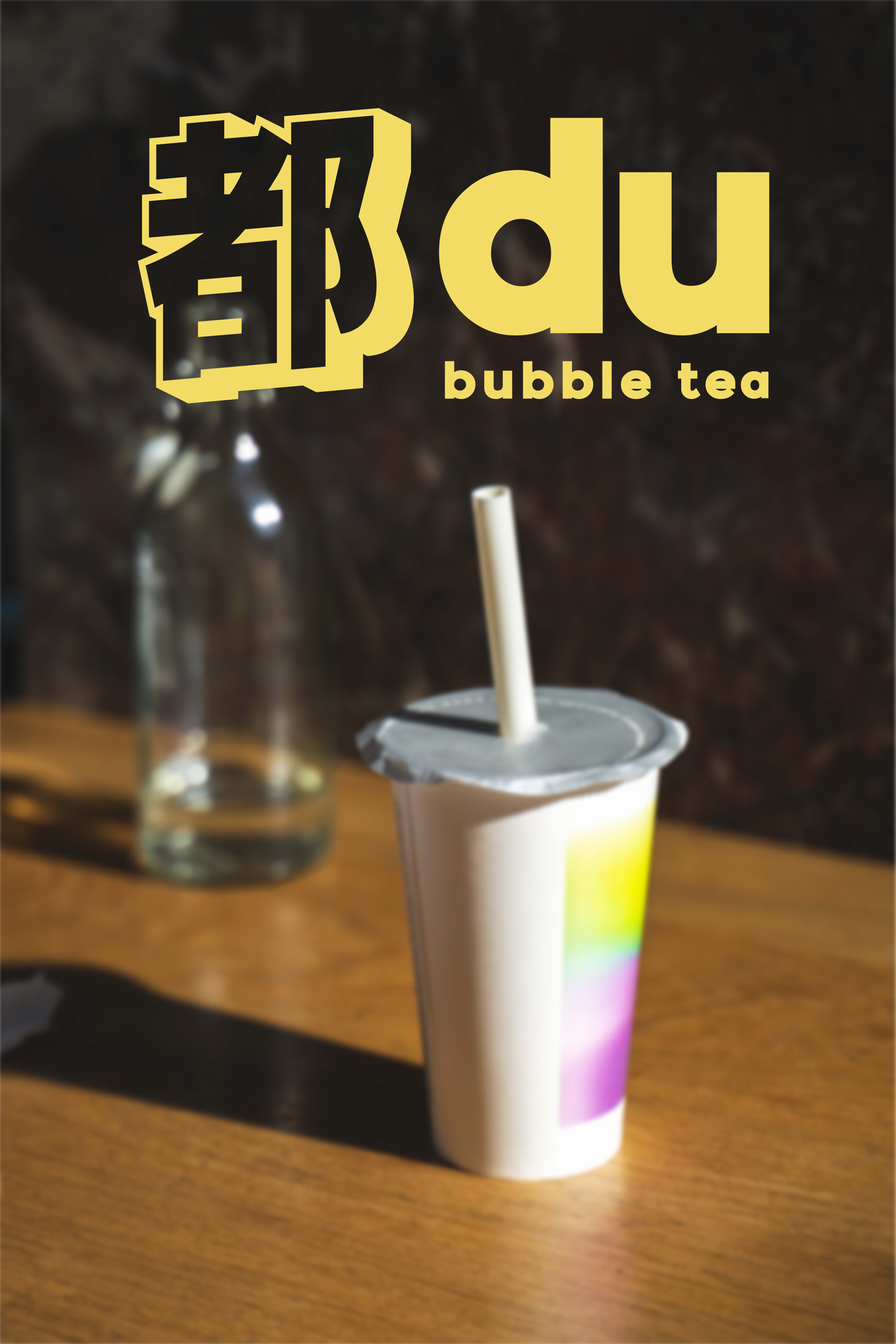
Poster Proposal
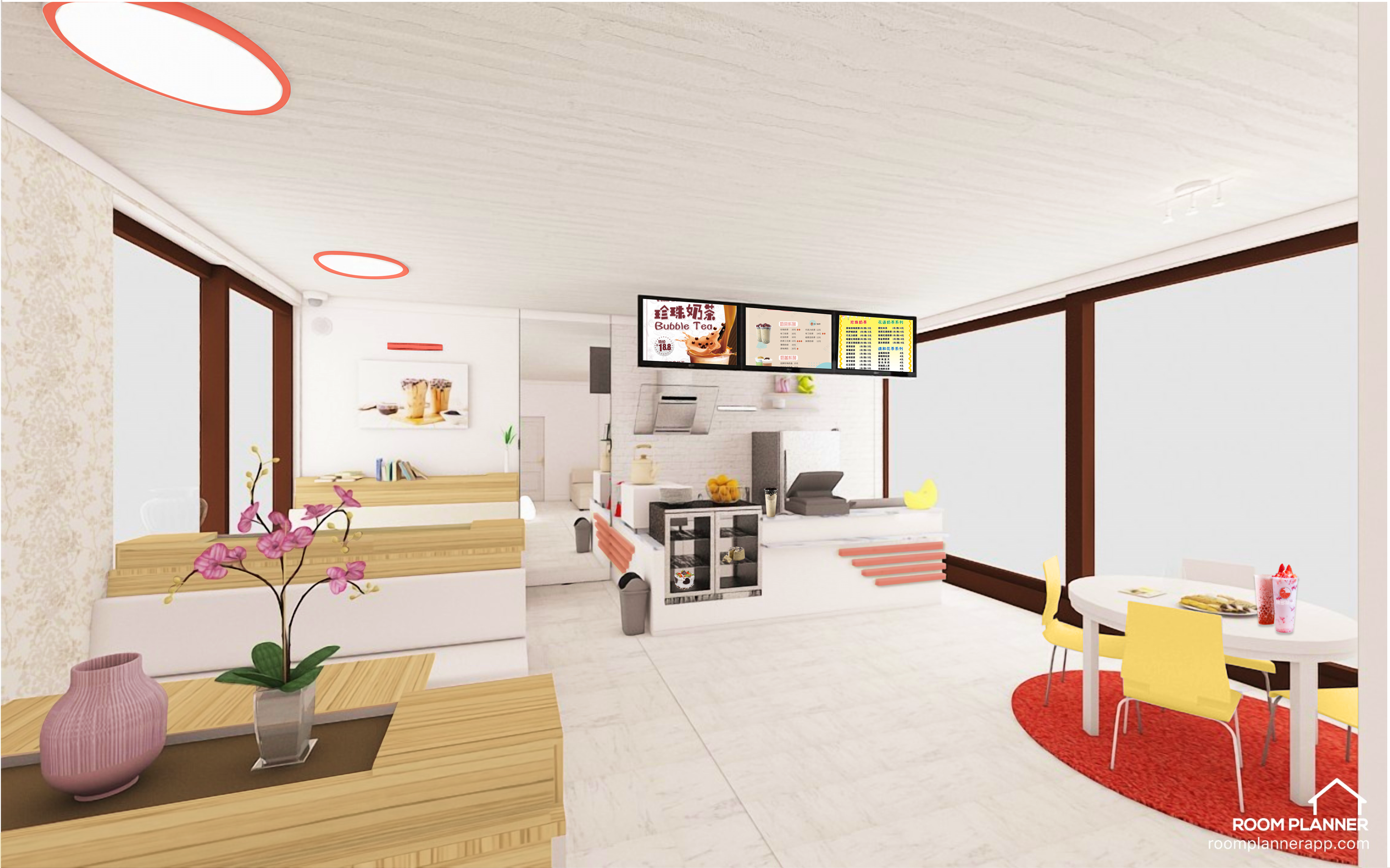
3D Prototype
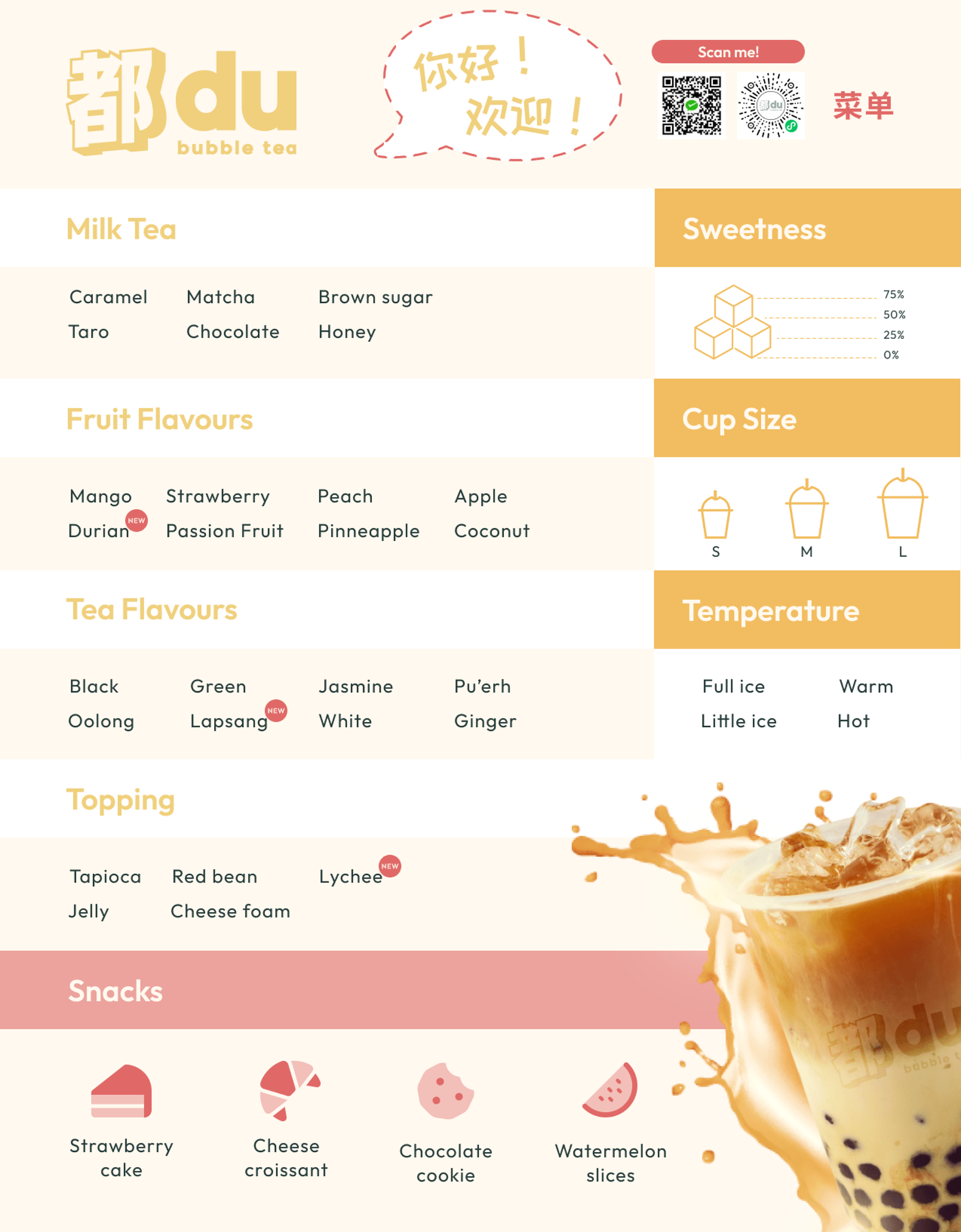
Menu
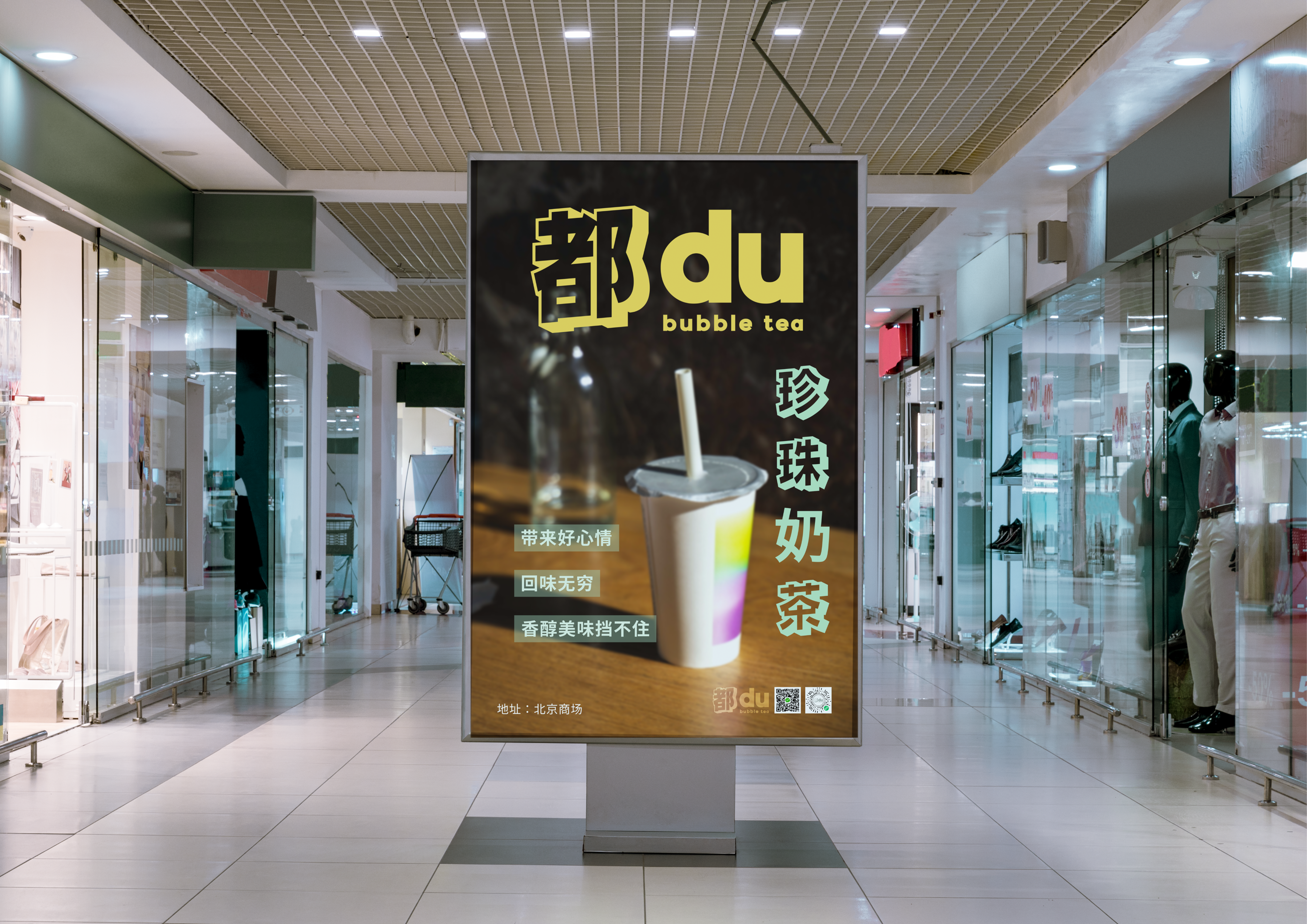
Mock-up
Takeaways & Future Work
Reflecting on the journey of this project, several key takeaways emerge, along with potential avenues for future exploration and refinement.
• Cultural Sensitivity and Adaptability: The project highlighted the importance of cultural sensitivity and adaptability when designing services for diverse markets. Future work could involve further research into cultural nuances and preferences to enhance the service offering's relevance and appeal in each market.
• Implementation Strategy and Business Planning: Moving forward, developing a robust implementation strategy and business plan will be crucial for the success of the Du Bubble Tea shops. This includes considerations such as securing key resources, managing setup costs, fostering community engagement and protecting intellectual property rights. Future work could involve conducting feasibility studies, market analyses, and financial projections to inform the development of a comprehensive implementation plan.
• Sustainable Recommendations: Implementing sustainable recommendations can further enhance the success and sustainability of the bubble tea shops. Training employees, tracking inventory and implementing eco-friendly practices are just a few examples of areas where improvements can be made. Future work could involve piloting these recommendations, gathering feedback, and refining strategies based on real-world performance data.
• Continuous Iteration and Improvement: This project underscores the importance of continuous iteration and improvement. As the shops launch and operate in real-world environments, ongoing monitoring, evaluation, and adaptation will be essential to address challenges. Future work could involve implementing feedback loops, conducting regular performance assessments, and iterating on strategies based on insights gathered from customer interactions and market dynamics.
Thank you. Tak. 谢谢.
for visiting my portfolio
